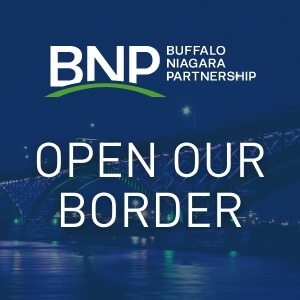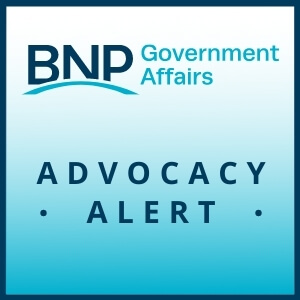7.1.21 BNP Advocacy Alert – Where are we on Infrastructure?
Blog Categories
Josh Veronica
July 1, 2021

As we enter July – Senator Schumer’s target finish line for the infrastructure package – many details remain in the air. President Biden recently joined a bipartisan coalition of Senators to announce a deal had been reached on infrastructure. But, until the ink is dry and the votes are cast, debate is far from over.
What’s the Status?
Democrats are planning to pass two major infrastructure bills. The first will be a physical infrastructure bill that will fund what comes to mind when traditionally thinking of infrastructure: roads, bridges, pipes, rails, etc. Since these investments are broadly popular, the White House and Congressional leaders plan to pass the bill with the bipartisan support needed to overcome the Senate’s 60-vote filibuster threshold.
The other bill addresses what Democrats are labelling “human infrastructure,” which includes social investments like Medicare expansion, childcare funding, climate initiatives, and housing access efforts. Since these initiatives evoke sharper ideological divisions than physical infrastructure does, a "human infrastructure" bill will not pass with a bipartisan supermajority. Instead, Democrats are planning to advance the bill via “budget reconciliation,” a procedure that only requires a simple majority for passage. Given the significant new expenditures this bill would bring, it is expected to include tax increases.
President Biden initially indicated that he will not sign the bipartisan physical infrastructure bill unless Congress also places the "human infrastructure" reconciliation bill on his desk. While he walked back these comments days later, House Speaker Nancy Pelosi echoed this sentiment, stating: “We will not take up a bill in the House until the Senate passes the bipartisan bill and a reconciliation bill. If there is no bipartisan bill, then we’ll just go when the Senate passes a reconciliation bill.
So, the key question will be: how does Senator Schumer get to 60 votes on the physical infrastructure bill? Will advancing the "human infrastructure" bill imperil his chances of getting 10+ GOP votes on the physical infrastructure bill? Will he lose support from his own conference as he tweaks the proposal to earn GOP votes?
What’s in the Physical Infrastructure Proposal?
According to the White House, the bipartisan physical infrastructure agreement would include:
- $65 billion for high-speed broadband buildout
- Funding to replace all lead water pipes and service lines
- $48.5 billion for public transit upgrades
- Funding to “to reconnect communities divided by transportation infrastructure”
- Purchase of 35,000 new electric school buses
- $21 billion to clean up Superfund and Brownfield sites
- $52 billion for flood and wildfire resilience
- Significant investment in renewable energy generation and transmission
- $678 billion in other traditional infrastructure investments as follows:
| Amount (billions) | |
| Total | $579 |
| Transportation | $312 |
| Roads, bridges, major projects | $109 |
| Safety | $11 |
| Public transit | $49 |
| Passenger and Freight Rail | $66 |
| EV infrastructure | $7.5 |
| Electric buses / transit | $7.5 |
| Reconnecting communities | $1 |
| Airports | $25 |
| Ports & Waterways | $16 |
| Infrastructure Financing | $20 |
| Other Infrastructure | $266 |
| Water infrastructure | $55 |
| Broadband infrastructure | $65 |
| Environmental remediation | $21 |
| Power infrastructure incl. grid authority | $73 |
| Western Water Storage | $5 |
| Resilience | $47 |
Source: White House
What’s in the "Human Infrastructure" Proposal?
The White House’s American Families Plan is the basis for the “human infrastructure” bill. It includes funding for:
- Two free years of community college
- Universal access to pre-kindergarten
- Tuition assistance, including increased Pell Grants, allowing DREAMers to utilize Pell Grants, and specialized assistance for students at minority-serving institutions
- Childcare cost relief
- Paid family & medical leave
- Expansions of SNAP, school meal, and summer nutrition programs
- $3 billion for maternal health
- Making permanent the Child and Dependent Care Tax Credit and the expended Earned Income Tax Credit for Childless Workers
- 5-year extension of the Child Tax Credit
- Health insurance premium reduction efforts
What can we do?
The BNP has long advocated for a federal infrastructure package. Federal investment could help the Buffalo Niagara region undertake landmark improvements, complete a backlog of smaller projects, and modernize our community for the 21st century. In the process, workers across the region would see an influx of opportunities.
Congress must not lose the moon while counting the stars. While the BNP has not weighed in on the specifics of these competing proposals, the most important outcome is an ultimate federal investment that meets the infrastructure needs of the Buffalo Niagara region.
The BNP has communicated with lawmakers about the importance of passing a comprehensive infrastructure package, and has also discussed possible projects with our federal delegation to illustrate the monumental impact this package would have if enacted.
To contact your Congressional representatives about the need to pass an infrastructure package, use our one-click tool here.
The BNP will continue to keep you informed as the Congressional infrastructure negotiations continue.
Related Posts
It’s Time to Reopen the U.S.-Canada Border
The time has come to reopen the U.S.-Canada land border. The border has been closed for non-essential travel since March 21, 2020 – over a full year. After a year of financial devastation, the economies of Southern Ontario and Western New York need a boost, and reopening the border would provide it.
4/23/21 Webisode: Preparing Your Business for COVID-19 Vaccines #2: How To – Creating a Vaccine Policy & Plan
COVID-19 continues to create significant health and economic challenges, but hope is on the horizon as vaccinations are being administered. As we enter this next phase in the COVID-19 recovery and eradication, employers will have a key role to play in the WNY vaccination efforts because employers are often perceived as more trustworthy than the government.
4.22.21 COVID-19 Bulletin: Vaccinating Your Workforce – What You Need To Know
Today, the State Legislature is passing a short-term budget extender, indicating a continued lack of consensus on a budget deal. The extender allows the state government to continue operations while buying time for the Governor and Legislature to reach an agreement on a number of outstanding issues. As we
4.19.21 BNP Advocacy Alert – COVID-19 Pandemic Small Business Recovery Grant Program
As a part of this year’s New York State budget, $800 million was allocated to a new COVID-19 Pandemic Small Business Recovery Grant Program. The Buffalo Niagara Partnership wanted to alert you of this opportunity so that your business can take advantage as soon as the application becomes available.


